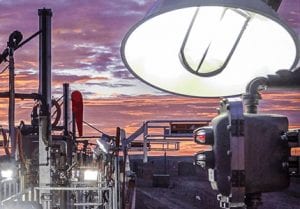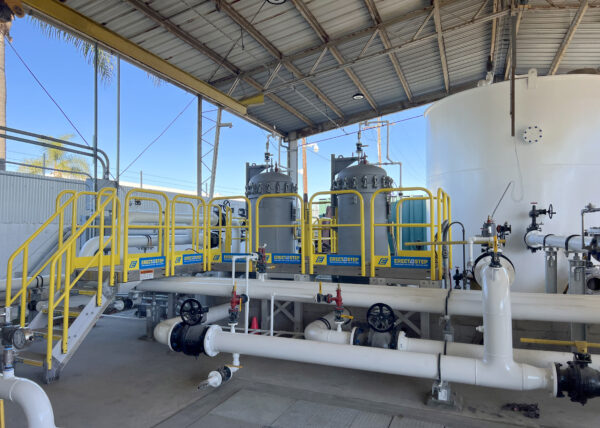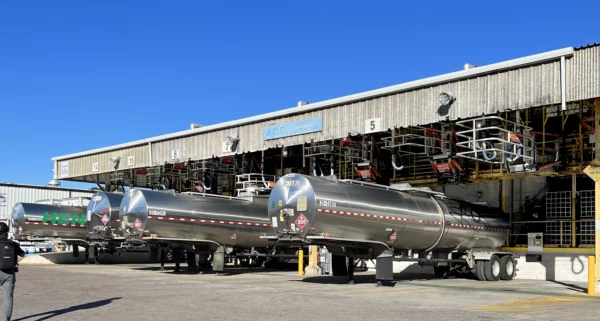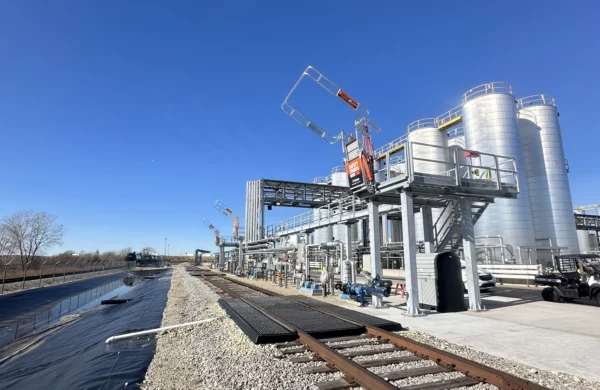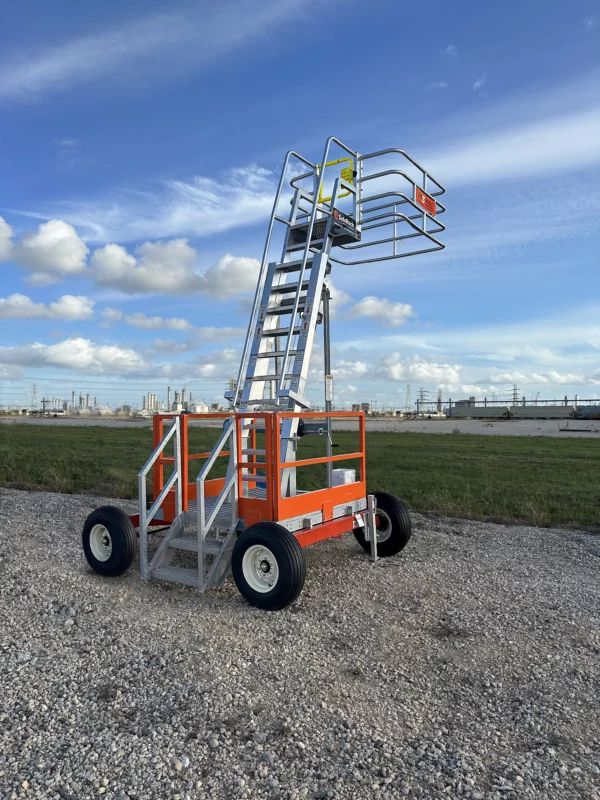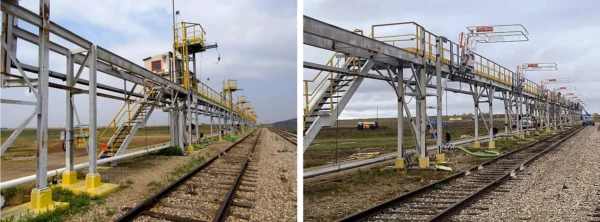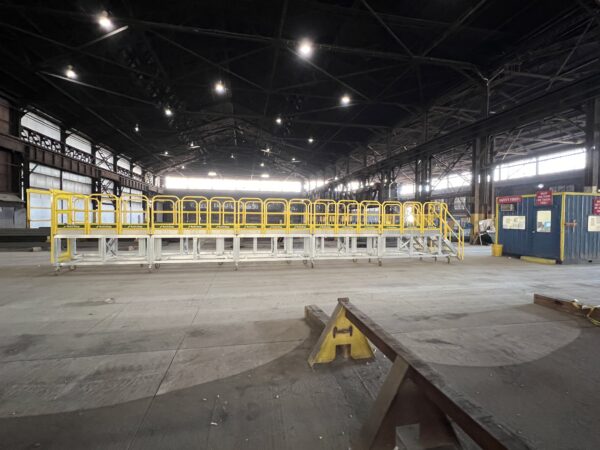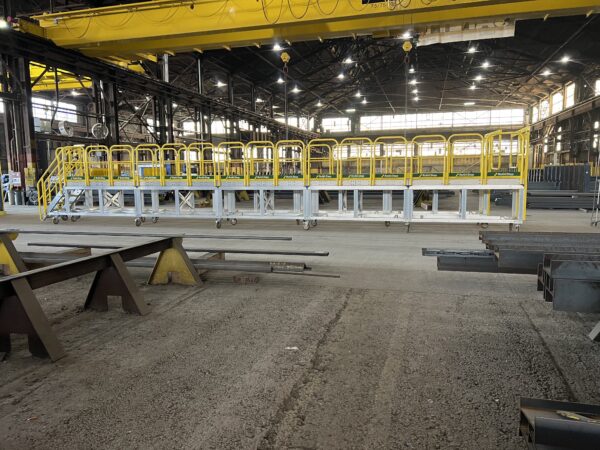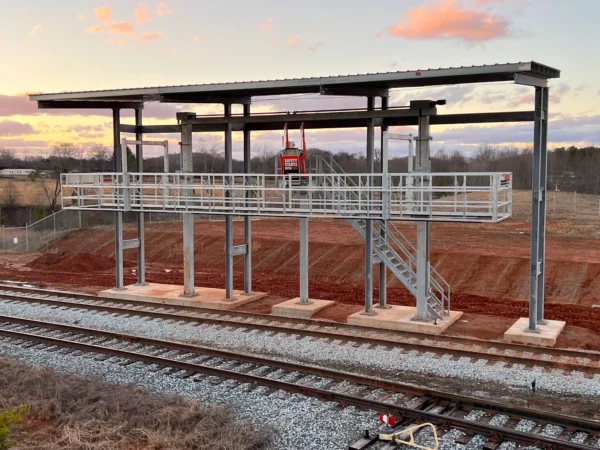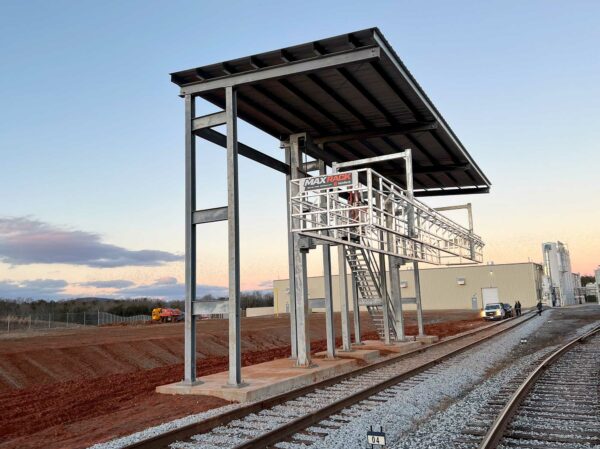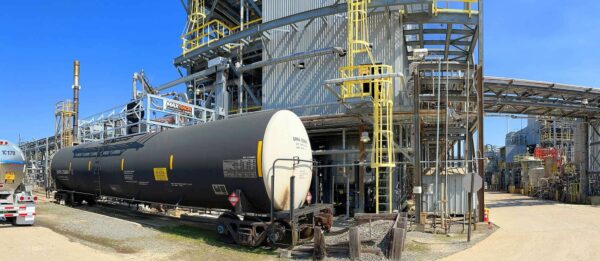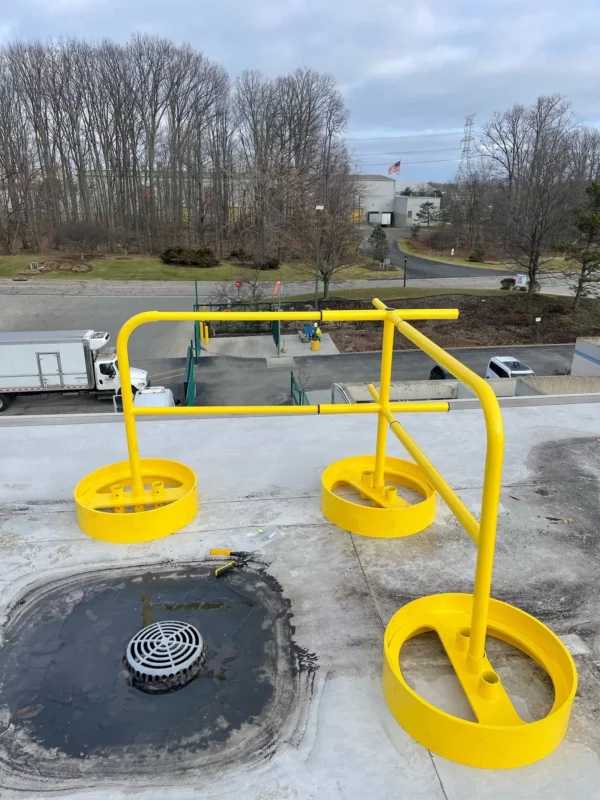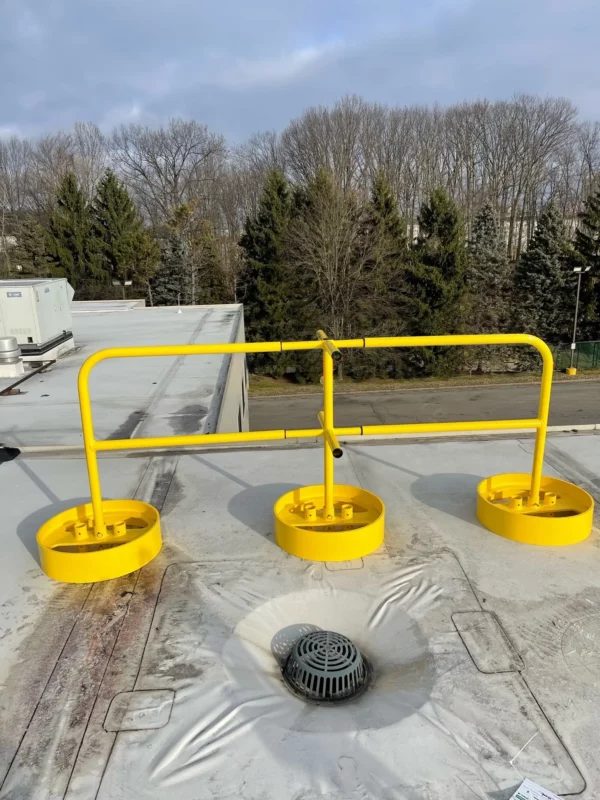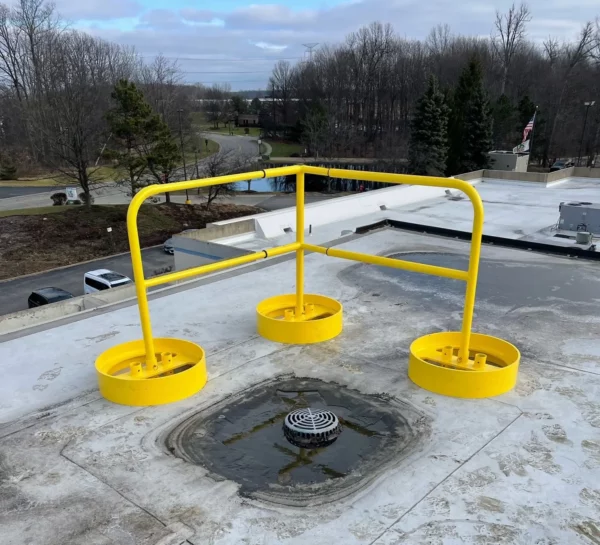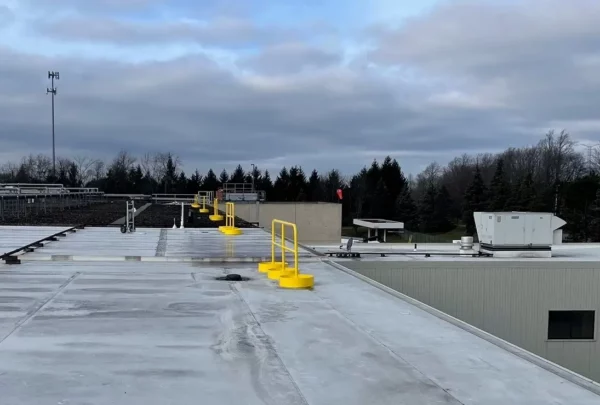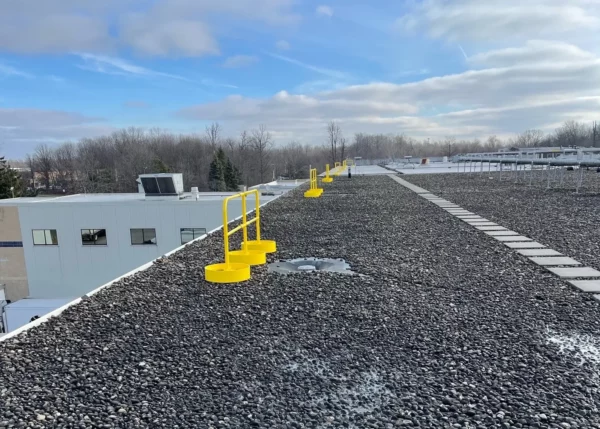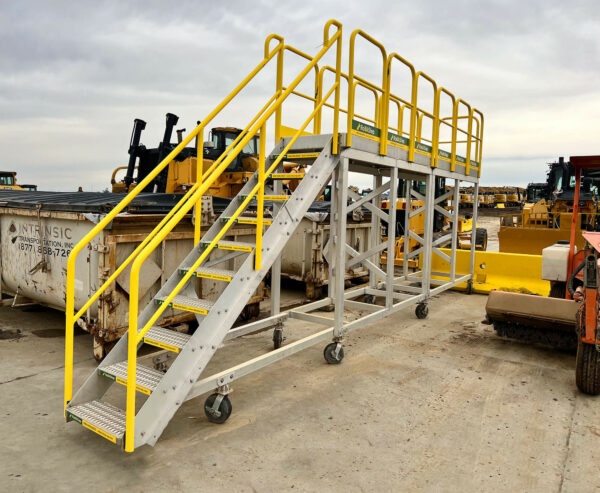Get a quote, configure a custom safety solution or ask a question. We're here to help!








- Spill ContainmentMore …Loading Safety CagesMore …
SafeRack Worldwide
We pride ourselves on one-on-one customer service. When you call SafeRack, we'll be there to answer your questions with a combined experience of 400+ years.
Select your region below.- View Products
- Railcar & Truck Loading Platforms
- Gangways & Loading Ramps
- Stairs, Platforms & Ladders
- Mobile Ladders & Platforms
- Loading Arms & Fluid Transfer
- Safety Gates & Traffic Control
- Aviation & Aerospace Access
- Marine Access & Loading
- Grounding & Monitoring
- Spill Containment
- Loading Safety Cages
- Transloaders & Skids
- Shelters & Canopies
- Fall Protection
- Terminal & Speciality
Home / Industries / Bulk Chemical Loading / Methyl ChlorideMethyl Chloride (CH3CI) Handling Design, Loading & Installation
Methyl Chloride Loading Solutions – Optimal Safety for Maximum Productivity
What is methyl chloride?
Chloromethane, also referred to as methyl chloride, is a colorless, odorless, and extremely flammable liquefied gas. CH3CI is a crucial reagent in industrial chemistry, commonly used in the manufacturing of paint removal technology, pharmaceutical manufacturing, and metal cleaning and degreasing.
In the United States, methyl chloride is a “tight-fill” (closed-loop) operation via chemical hoses or 3” stainless steel loading arms to load and unload into rail cars or trucks. If not handled properly, methyl chloride can cause serious injuries which is why the use of personal protective equipment (PPE) is required. Because loading operators need to access equipment from the top of the vehicles while operating, high-quality fall prevention systems are essential to ensure increased throughput and operator safety.
Methyl chloride is typically shipped in 26,000 gallon DOT-105, 112 or 114 pressurized insulated or non-insulated tank cars with safety valves. The rails cars themselves are ~ 9′ outside diameter with an overall length of ~45’ to 50′, with a 6’ x 6’ center opening or off-set crash box openings.


















Question, Get a Quote, Live Demo or Request an On-Site Visit
Our experts simplify the complex
View Full TextTank truck loading and unloading procedures are similar to railcar applications with the trailers meeting established DOT requirements for transporting methyl chloride and other similar commodities. Approved DOT trailers include MC 307 or low pressure chemical ISO containers. Trailers and ISOs are typically unloaded from the bottom. An extension pipe with two valves is flanged to the top of the trailer.
All trailers must be equipped with pressure relief valves, and trailers with bottom outlets must be equipped with remote-controlled stop valves.
Specifications for Your Project
As a starting point, we will need to know the following:
- Railcar connection locations require flexibility. Do you know what the breadbasket connections look like?
- Are you using liquid and vapor arms/hose as two separate devices or a piggyback arm?
- Is the loading station indoors or outdoors?
- Is the loading area temperature controlled?
- How will you spot your railcars?
Our highly trained technical sales team will complete a detailed site survey to determine all dimensions, obstructions, and access issues. Our goal is always to provide the safest working environment to protect operators and the equipment while helping you improve throughput and productivity at your facility.
Custom Applications
Whether you are looking for a turn-key installation, on-site supervision or a safety maintenance program, we are ready to assist you. We can do as little or as much as you need. Our project management and supervision team are the best in the business ready to support the needs of your company.
- Collaborative Design – Our loading platform specialists will work with you one-on-one to design the best loading solution for your facility.
- Contract Review – Our team will review the drawings and associated documents related to the contract prior to site arrival.
- Risk Assessment – We will always provide a thorough review of your site to assess the risks to workers and visitors to your facility.
- Shipment Inspection – Each shipment is thoroughly inspected for shipping damage or abnormalities.
- Material Receiving – Our team will supervise off-loading and transport at your site.
- Installation Management – We offer supervised installation and on-site coordination of your project.
- Start-up & Commissioning – On-site training is available as needed for users and maintenance personnel.
Loading Arms
Generally speaking, we recommend rigid pipe loading arms wherever possible. We believe they are the most successful option because they are:
- balanced throughout their movement envelope
- designed not to hit the ground, protecting the asset and the operator
- ergonomic requiring only one person operation
- fitted with manual or actuated valves
- fitted with optional purge/vent facilities
- moved into position with ease and left hanging in the air while the operator prepares the tanker connection
- parked neatly
Alternatively, we don’t recommend hoses because they:
- require an annual pressure test
- are difficult to stow neatly when not in use
- can be dropped or driven over
- are very heavy to use if fitted with a valve at the tanker connection point
- cannot be easily heated or have vent/purge valves fitted to them
- prone to catastrophic failure
Methyl Chloride Loading Platform
Quote or discuss your installation.
Start by selecting loading application"*" indicates required fields
Below are some of the loading and unloading solutions for illustrative purposes only. Our experts will work with you and your team for a custom solution to suit your needs.
Methyl Chloride Loading

Methyl chloride is typically loaded into railcars or tank trucks via boom-supported stainless steel arms or chemical hoses with flanged end connections. The arm or hose will have a top inlet with a control valve to ensure it self-drains after use and is supported by a by-pass arm along the length of a mechanical loading arm to improve handling. One liquid and one vapor arm can be installed both the liquid and vapor hoses can be mounted on one by-pass arm. For unloading, typically a rigid stainless steel self-draining loading arm with PTFE or Viton seals would be used. Purge lines can be fitted to the arm for nitrogen purging. Additional features such as parking latches with proximity sensors can be incorporated into the total system to ensure the arm is correctly stowed when not in use before any rail movement can occur.
Loading Gangways & Safety Cages

A 36″-48″ wide access gangway is preferable as it helps improve access and egress to and from the vessel. A wider gangway will reduce the risk of the operator’s PPE getting caught, torn or damaged, and will improve productivity and safety. Powered gangway solutions are also an option, with both hydraulic and pneumatic solutions being commonly used. Each gangway will be fitted with a two-rail safety cage for the railcar crash box. This will be a centered 6’x6’ safety cage to sit directly over the crash box. This will provide a safe, secure work environment for operators connected to a breathing apparatus.

SafeRack’s GX SAS gangways use Retractalok power-assist technology allowing operators to raise or lower effortlessly, light as a feather to lift, and solid as a rock. Tested in the most critical applications, this revolutionary new gangway outperforms all others. Available in multiple lengths and widths.
Learn MoreMAXRack Elevating Safety Cage
 As an alternative to our two and four-rail safety cages, some customers prefer our MAXRack elevating safety cages. The ultimate fall prevention solution engineered to keep operators safe and productive. Designed for both trucks or railcars, and available in multiple cage lengths and widths. Safe, durable, and easy to use. MAXRack is built rock-solid with galvanized steel column supports and lifting arms (cages can be Aluminum, Galvanized, or Stainless Steel depending on application) Available in two power options – Pneumatic Air Drive and Electric Drive (Explosion and Non-Explosion Proof).
As an alternative to our two and four-rail safety cages, some customers prefer our MAXRack elevating safety cages. The ultimate fall prevention solution engineered to keep operators safe and productive. Designed for both trucks or railcars, and available in multiple cage lengths and widths. Safe, durable, and easy to use. MAXRack is built rock-solid with galvanized steel column supports and lifting arms (cages can be Aluminum, Galvanized, or Stainless Steel depending on application) Available in two power options – Pneumatic Air Drive and Electric Drive (Explosion and Non-Explosion Proof).
Learn MoreMethyl Chloride Eye Wash/Drench Showers

ANSI guidelines state that eyewash/drench showers need to be located 10 seconds or 55’ (16.8m) from contaminants or hazardous materials. Eyewash stations must be on the same horizontal plane with no obstructions.
Our standard combination drench shower/eyewash unit saves limited space and fits easily into any work environment.
Methyl Chloride Spill Containment

Spill containment pans are provided at the point of loading operations and are an essential element of a comprehensive site safety and environmental protection plan. Methyl Chloride Grounding

Methyl chloride is a flammable liquid and vapor. Industry best practice includes the grounding of all vessels before starting the loading or unloading process. - Ground controllers — ensure true grounding before product flow is permitted.
- Explosion-proof enclosures — meet or exceed UL, CSA, and Ex requirements.
- Always use non-sparking tools when handling MMA.
Methyl Chloride Safety Gates

Safety Gates will be installed at the top of stairs and any other openings to ensure operator and visitor safety at all times.  YellowGate Safety Gates
YellowGate Safety GatesOur industrial safety gates are the most flexible fall protection product on the market with openings spanning 16” to 36”. Field adjustable with nothing more than a wrench, they are an easy way to protect every opening with just one SKU. Learn More
Methyl Chloride Options

- Lighting – Lighting both over and under the platform will be provided for optimal safety. For overcast days or second shifts, lighting is essential for improved safety and productivity.
- Platform & Canopies – Full platform canopies reduce exposure to the elements and improve safety and productivity from the loading operator’s perspective.
- Operator Shelter – Depending on your site requirements, consideration should be given to an operator or guard building on the loading platform. This can be customized to meet specific site requirements.
- Wheel Chocks – Railcar wheel chocks provide fast blocking of all types of railcars and meet OSHA regulations to safely prevent railroad cars from moving during loading or unloading operations. This is a requirement by the Department of Homeland Security.
Personal Protective Equipment PPE Requirements
Eye/Face Protection: Wear chemical safety goggles. A face shield (with safety goggles) may also be necessary.
Skin Protection: Wear chemical protective clothing including gloves, aprons, and boots. Coveralls or long sleeve shirts and pants are suggested in some operations. Wear a chemical protective, full-body encapsulating suit, and self-contained breathing apparatus (SCBA). Suitable materials include butyl rubber, neoprene rubber, Viton®, Viton®/butyl rubber, Barrier® – PE/PA/PE, Silver Shield® – PE/EVAL/PE, Trellchem® HPS, Trellchem® VPS, Saranex®™, Tychem® BR/LV, Tychem® Responder® CSM, Tychem® TK. The following materials should NOT be used: natural rubber, polyvinyl chloride. Recommendations are NOT valid for very thin neoprene rubber gloves (0.3 mm or less).
Respiratory Protection: Up to 5 ppm:
(APF = 10) Any chemical cartridge respirator with cartridge(s) providing protection against chlorine*; or Any supplied-air respirator*.
*Reported to cause eye irritation or damage; may require eye protection.
APF = Assigned Protection Factor
Recommendations apply only to National Institute for Occupational Safety and Health (NIOSH) approved respirators. Refer to the NIOSH pocket guide to chemical hazards for more information.
Use a local exhaust ventilation and enclosure, if necessary, to control the amount of vapor in the air. Consider using a corrosion-resistant exhaust ventilation system separate from other ventilation systems. It may be necessary to use stringent control measures such as process enclosure to prevent product release into the workplace. Use backup controls (e.g. double mechanical pump seals) to prevent the release of this material due to equipment failure. * For illustrative purposes only. Our experts will work with you and your team for a custom solution to suit your needs Customer Reviews
 5 5SafeRack came through!
5 5SafeRack came through!We had to do some gap filling on the ramp for our railcar fall protection unit. Your competitors could not supply the necessary products in time, but SafeRack came through with the add-ons……in time! Delivery time was as expected. Stephen Todd is always on top of things, keeping me informed. His communication throughout the project was excellent. We would recommend SafeRack because they supply good products.
By Dan Powell from Hexion, Inc. on 1/4/175 5After we received the gangway, it fit perfectly.Phyllis Sikes is very punctual and polite – she did a great job and made this a success. After we received the gangway, it fit perfectly.
By RJ Teune from G & G Rebuilders on 12/3/11 5 5It’s a pleasure to do business with SafeRack.
5 5It’s a pleasure to do business with SafeRack.Travis McCraine was very helpful with determining exactly what parts I needed to order. Whenever I had questions he responded very quickly! Spare part readily available, which is important to prevent downtime of a system. Lightweight, easily replaced or repaired, high quality constructed. It’s a pleasure to do business with SafeRack and will always contact them for any loading rack type jobs I have in the future. Quality products, great service and I think that speaks for itself.
By Nathan Lajiness from Marathon Petroleum Corporation on 3/24/14 5 5SafeRack makes the finest work platforms available.
5 5SafeRack makes the finest work platforms available.Great product, reliable, easy to use, safe, with fast delivery and friendly service. SafeRack makes the finest work platforms available.
By Brian Boston from DuPont on 4/8/13 5 5We love the products and that’s why we keep coming back for more!
5 5We love the products and that’s why we keep coming back for more!The products speak for themselves in safety, engineering, and ease of use.
By Mike Tucker from Dyno Nobel, Inc. on 5/17/22 5 5Good price. Good quality.
5 5Good price. Good quality.Very responsive. Ease of installation. Customer satisfaction.
By Bob Greenly from McNeal Steel on 5/15/18SUCCESSFUL METHYL CHLORIDE LOADING PROJECTS COMPLETED
Methyl Chloride 101
Things to know about Methyl Chloride
Methyl Chloride is regulated by the U.S. Department of Transportation (DOT) and is classified as a flammable, liquefied gas with the DOT identification number UN 1063.
Methyl chloride is used as a chemical intermediate in the production of silicone polymers. It is also used as a solvent in the manufacture of butyl rubber and in petroleum refining.
Only properly trained and equipped personnel should be permitted to load or unload methyl chloride tank cars and tank trucks. Operators should wear approved PPE equipment including impervious clothing, footwear, gloves, goggles, and a respirator.
Methyl chloride is dangerous to human health, as acute exposure can cause severe cold skin burns and possible frostbite. Use only outdoors, or in a well-ventilated area.
Methyl chloride kills by turning into carbon monoxide upon entering the body. Once inside, the chemical replaces oxygen in the blood and quickly starves the heart and brain of air. Fatal injuries can occur in as little as 5 minutes. Since 2017 the EPA has restricted the use of this toxic chemical used in paint and coating strippers due to accidental deaths.
First-aid measures for exposure include:
- Remove operators from the source of exposure and into the fresh air.
- Remove contaminated clothing immediately.
- Wash skin thoroughly with soap and water.
- Flush eyes with tepid water for 15 minutes.
Store away from oxidizing agents, strong acids, or bases. Store in a cool, dry environment not to exceed 125 degrees F (52C) Post “No Smoking/No Open Flame” signs in storage and use areas.
Methyl chloride is not compatible with aluminum, carbon, or milled steel so great care should be taken to avoid contact with these materials. However, galvanized, stainless, and powder-coated steel are viable options.

Is your plant or facility compliant with ANSI, OSHA, and local safety codes? We can help!


EMERGENCY EYEWASHES / SHOWER EQUIPMENT AND THE ANSI/ISEA Z358.1 – 2014 STANDARD
Following eye contact, you must start washing with water immediately to prevent permanent damage. In the event of skin contact, you must start washing with water immediately to prevent slow-healing chemical burns.
Are you aware that ANSI guidelines state that Eye Wash/Drench Showers need to be located 10 seconds or 55′ from contaminates or hazardous materials and located on the same horizontal plane, with no obstructions? If bottom loading/unloading, an additional shower should be located at grade as well. SafeRack provides the above equipment plus much more needed to keep employees safe and expedite bulk chemical loading and unloading.
OSHA Regulation Experts – Does your existing chemical safety equipment or chemical loading systems meet OSHA’s latest requirements? SafeRack’s professional technical sales consultants are available to meet with your team to make recommendations to keep your facility in front of OSHA’s ever-changing country and region-specific standards and regulations, including lifeline and trolley beam fall arrest systems, metal stairs, and access platforms.
Why SafeRack?
The SafeRack approach is a collaborative one. Let’s call it The SafeRack Way. We have, over many years amassed a great deal of experience and understanding of the safety aspects involved in loading road tankers and railcars, as well as the behavioral habits of the operators.

Experts In Chemical Loading
- Acetic Acid
- Acetic Anhydride
- Acetonitrile
- Acrolein
- Acrylic Acid
- Acrylonitrile
- Aluminum Chloride
- Aluminum Sulfate
- Ammonia
- Ammonium Hydroxide
- Ammonium Nitrate
- Aniline
- Benzene
- Benzyl Chloride
- Bromotrifluoromethane
- Butadiene
- Carbon Dioxide
- Caustic
- Chlorine
- Chloroform
- Chlorosulfonic Acid
- DEF (Diesel Exhaust Fluid)
- Diethylene Glycol
- Dimethylformamide
- Dodecylbenzene Sulfonic Acid
- Ethanol
- Ethyl Acetate
- Ethyl Chloride
- Ethylene
- Ethylene Dichloride
- Ethylene Glycol
- Ethylene Oxide
- Ferric Chloride
- Ferrous Chloride
- Hexane
- Hydrochloric Acid
- Hydrofluoric Acid
- Hydrofluorosilicic Acid
- Hydrogen Cyanide
- Hydrogen Peroxide
- Hydrofluoric Acid
- Hypochlorous Acid
- Isopropyl Acetate
- Liquid Argon
- Liquid Nitrogen
- Liquid Oxygen
- Maleic Anhydride
- MDI
- Methanol
- Methyl Chloride
- Methyl Ethyl Ketone
- Methyl Methacrylate
- Methyl Isocyanate
- Molten Sulphur
- Nitric Acid
- Oleum
- Phenol
- Phosphoric Acid
- Phosphorus Oxychloride
- Phosphorus Trichloride
- Polypropylene
- Renewable Diesel
- Sodium Cyanide
- Sodium Hydroxide
- Sodium Hypochlorite
- Styrene Monomer
- Sulfuric Acid
- Sulfur Dioxide
- Titanium Tetrachloride
- Toluene
- Toluene Diisocyanate
- Turpenitne
- UAN (Urea Ammonium Nitrate)
- UREA
- Vinyl Acetate
- Vinyl Chloride
- Xylene
- Zinc Chloride
- Agro-Chemical
- Specialty Chemical
- Petrochemical

North America’s largest loading terminal
World-leading designer, manufacturer, and installer of truck and railcar loading platforms
As one of the primary railcar loading points, Hardisty is one of the major crude oil hubs in North America and a major origination point of pipelines that export to the United States. SCS was asked to supply and construct a SafeRack crude oil loadout terminal spanning nearly half a mile. The USD Hardisty terminal can load up to two 120-railcar unit trains per day and consists of a fixed loading rack with 62 railcar loading positions enclosed, separate control, operator, and mechanical buildings, as well as a unit train staging area and loop tracks capable of holding multiple unit trains simultaneously. SCS also supplied and installed boom-supported loading arms with supply and vapor management systems.

Quick Quote 866-761-7225
LET US DESIGN YOUR SOLUTION TODAY
Our innovative tools provide 3D visualizations and accurate quotes in minutes.
Get Help NowOrder Now 866-761-7225
Questions or Need a Quote?
Chat live with a knowledgeable and friendly safety expert now.

Bob Kashtan
Located in South Carolina

Joey Robinson
Located in South Carolina

Caelin Lacy
Located in South Carolina

Katie Kelly
Located in South Carolina

Amber Graham
Located in South Carolina










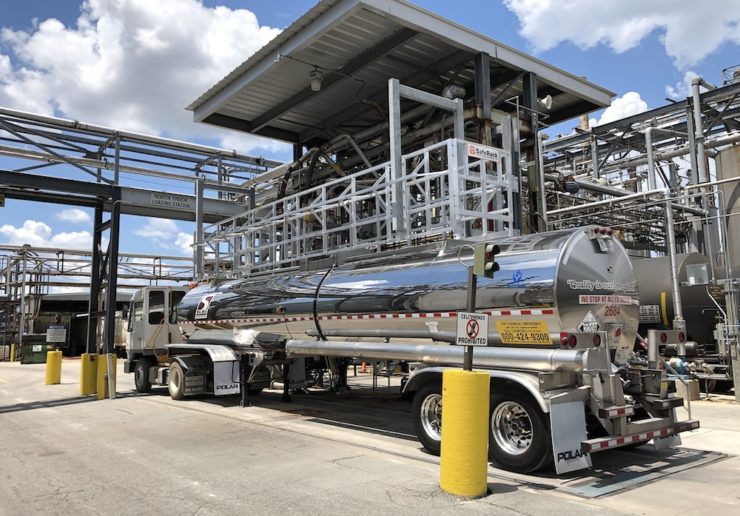
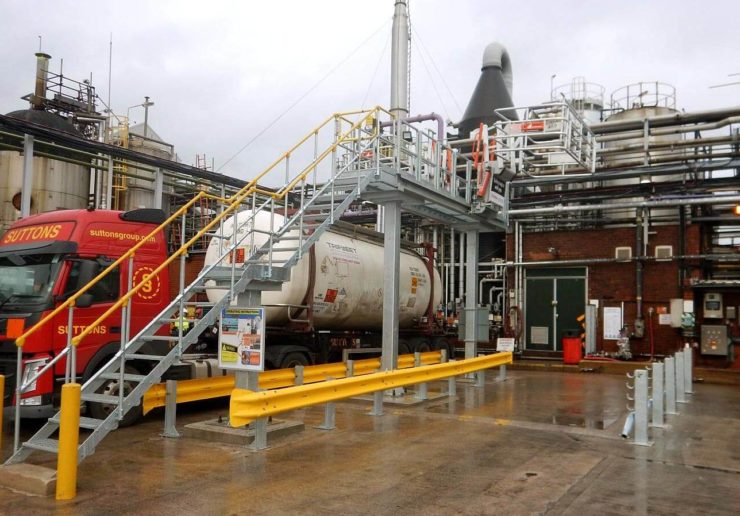
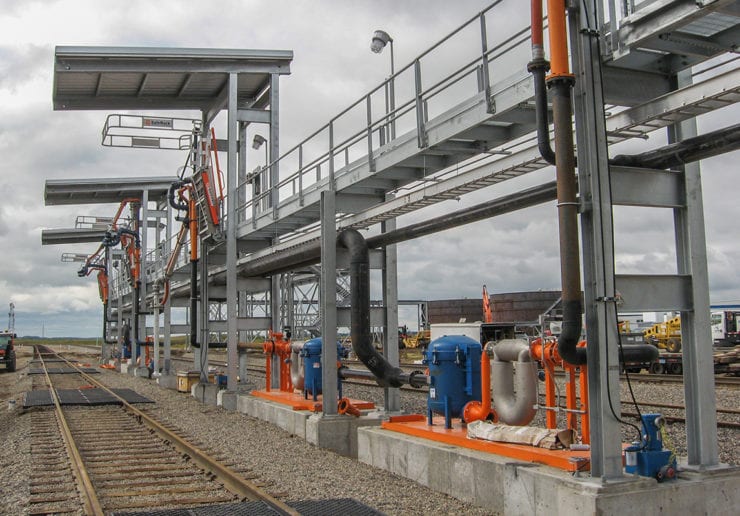
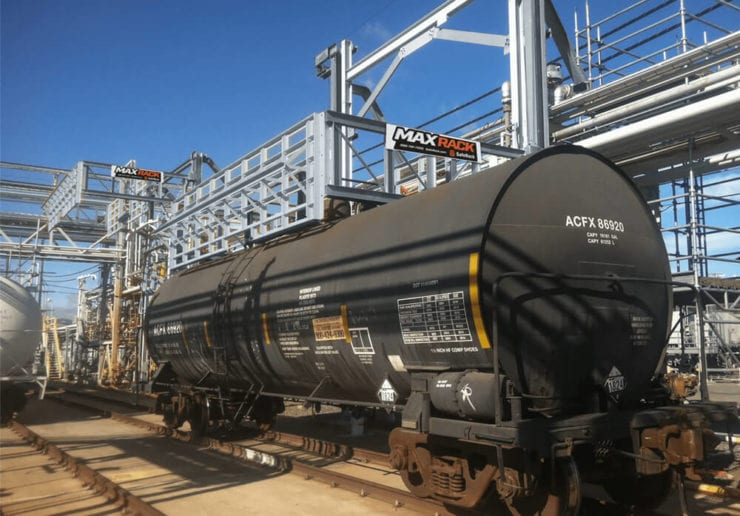

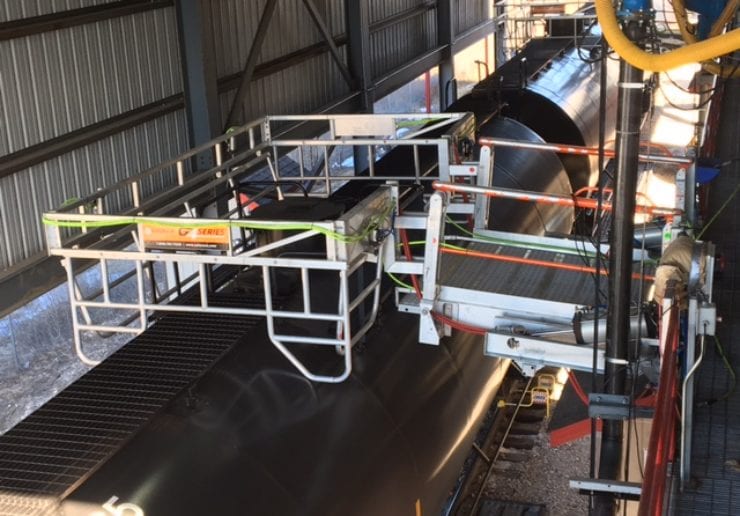

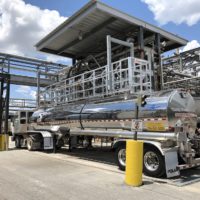
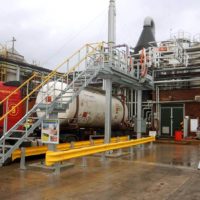
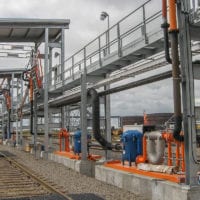





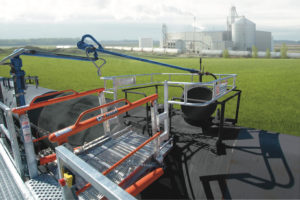
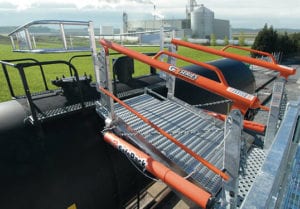
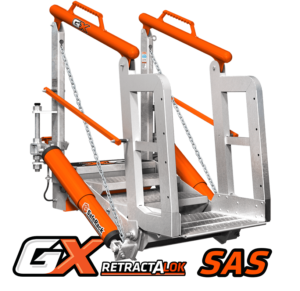
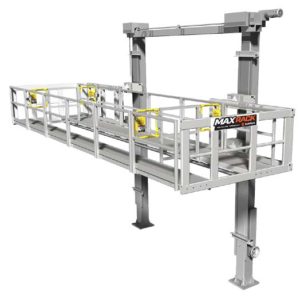 As an alternative to our two and four-rail safety cages, some customers prefer our MAXRack elevating safety cages. The ultimate fall prevention solution engineered to keep operators safe and productive. Designed for both trucks or railcars, and available in multiple cage lengths and widths. Safe, durable, and easy to use. MAXRack is built rock-solid with galvanized steel column supports and lifting arms (cages can be Aluminum, Galvanized, or Stainless Steel depending on application) Available in two power options – Pneumatic Air Drive and Electric Drive (Explosion and Non-Explosion Proof).
As an alternative to our two and four-rail safety cages, some customers prefer our MAXRack elevating safety cages. The ultimate fall prevention solution engineered to keep operators safe and productive. Designed for both trucks or railcars, and available in multiple cage lengths and widths. Safe, durable, and easy to use. MAXRack is built rock-solid with galvanized steel column supports and lifting arms (cages can be Aluminum, Galvanized, or Stainless Steel depending on application) Available in two power options – Pneumatic Air Drive and Electric Drive (Explosion and Non-Explosion Proof).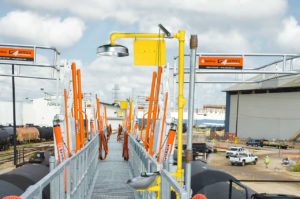
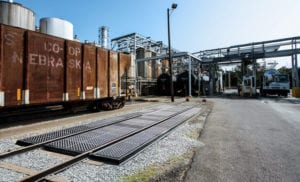
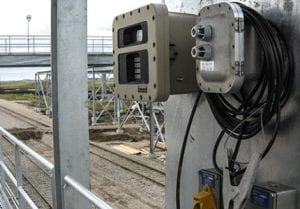
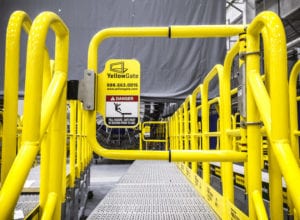
 YellowGate Safety Gates
YellowGate Safety Gates